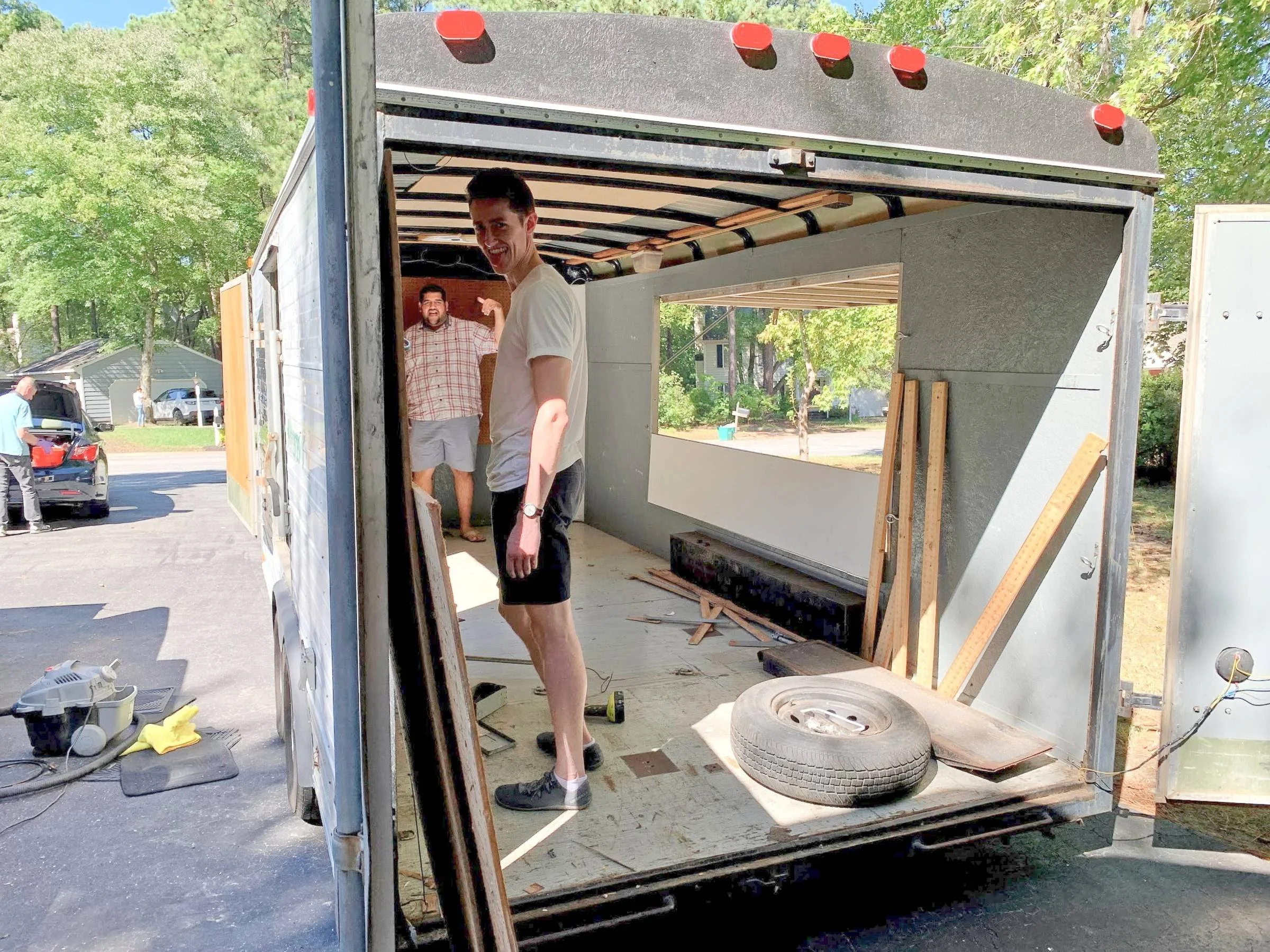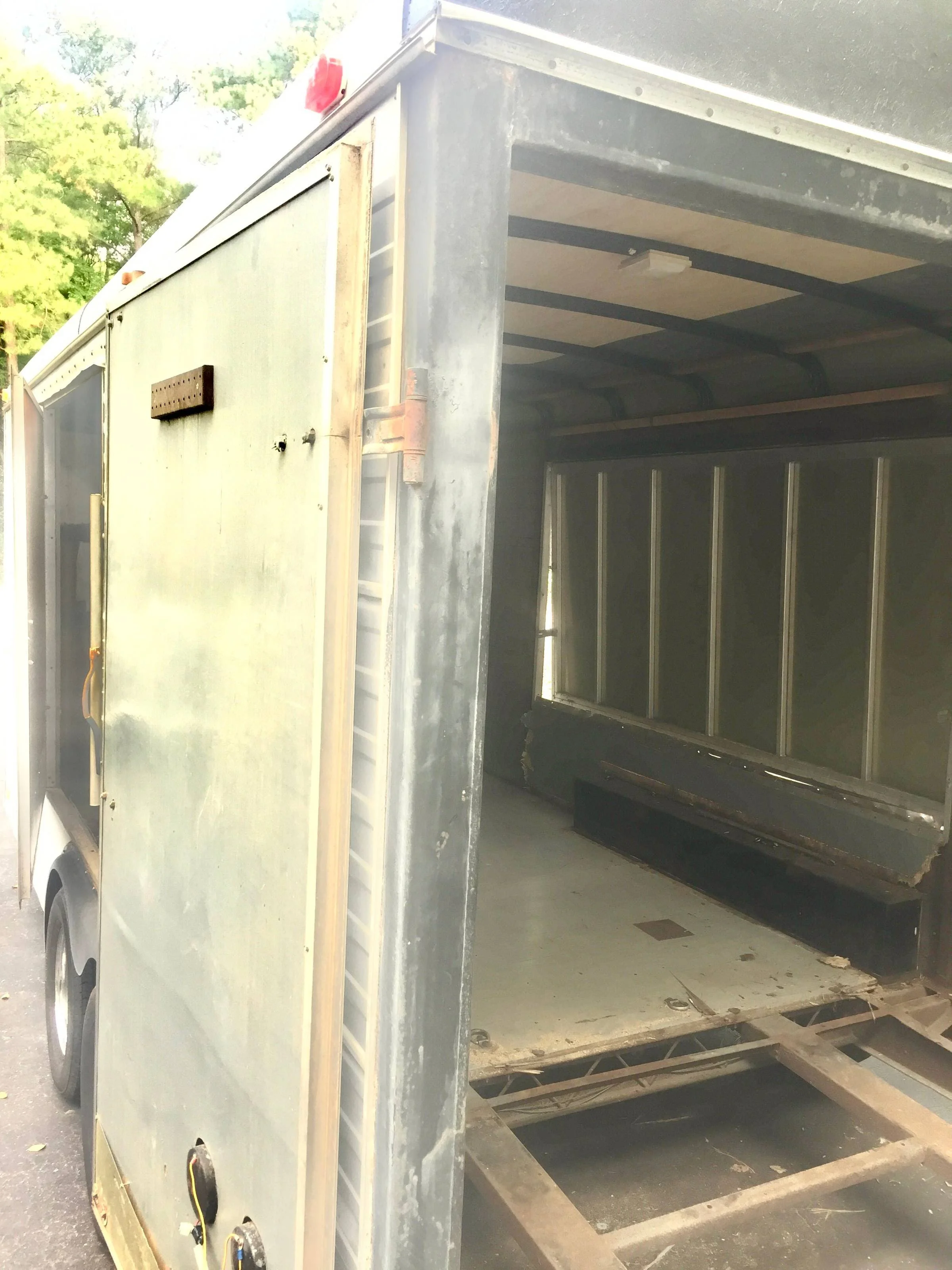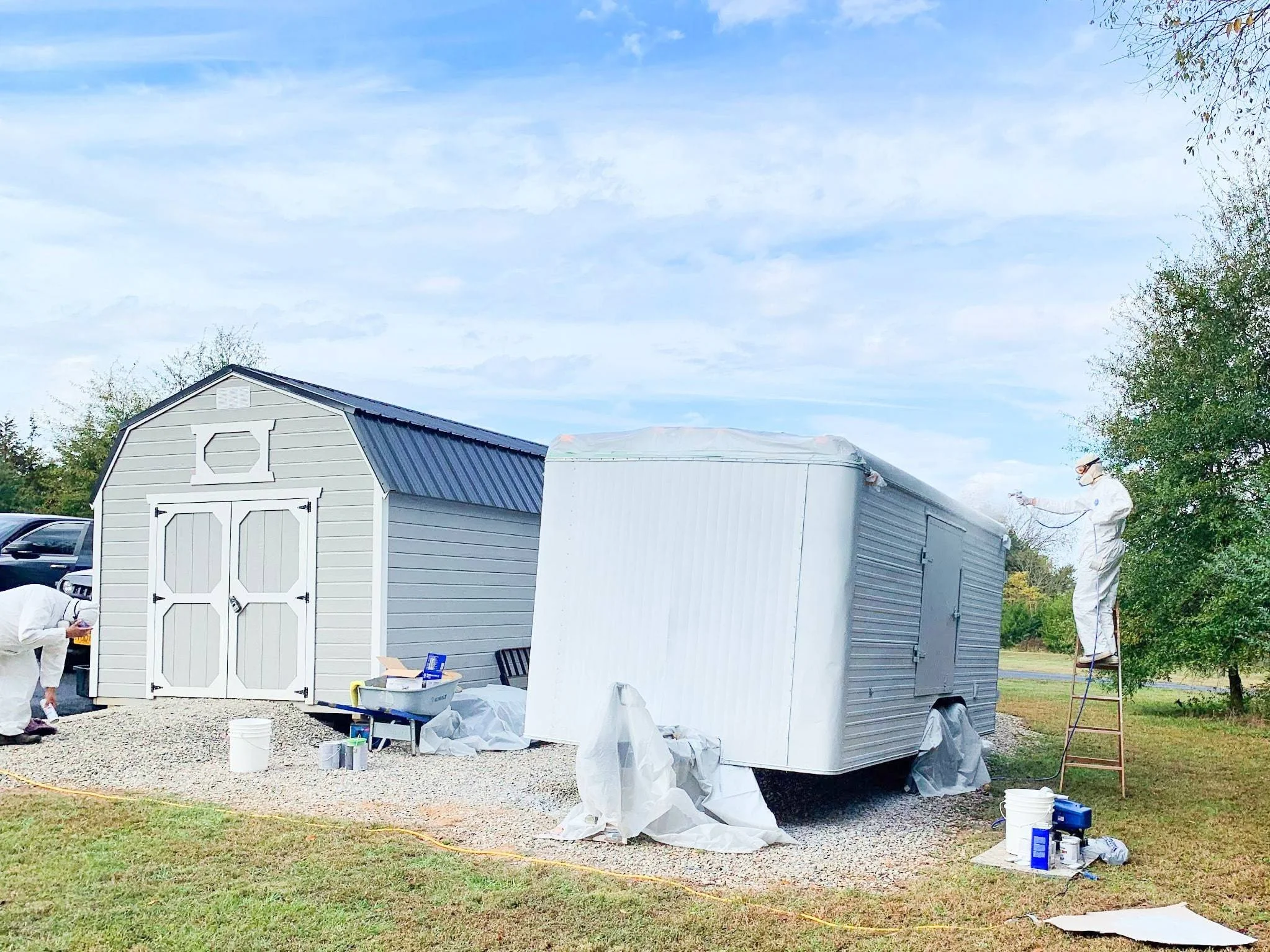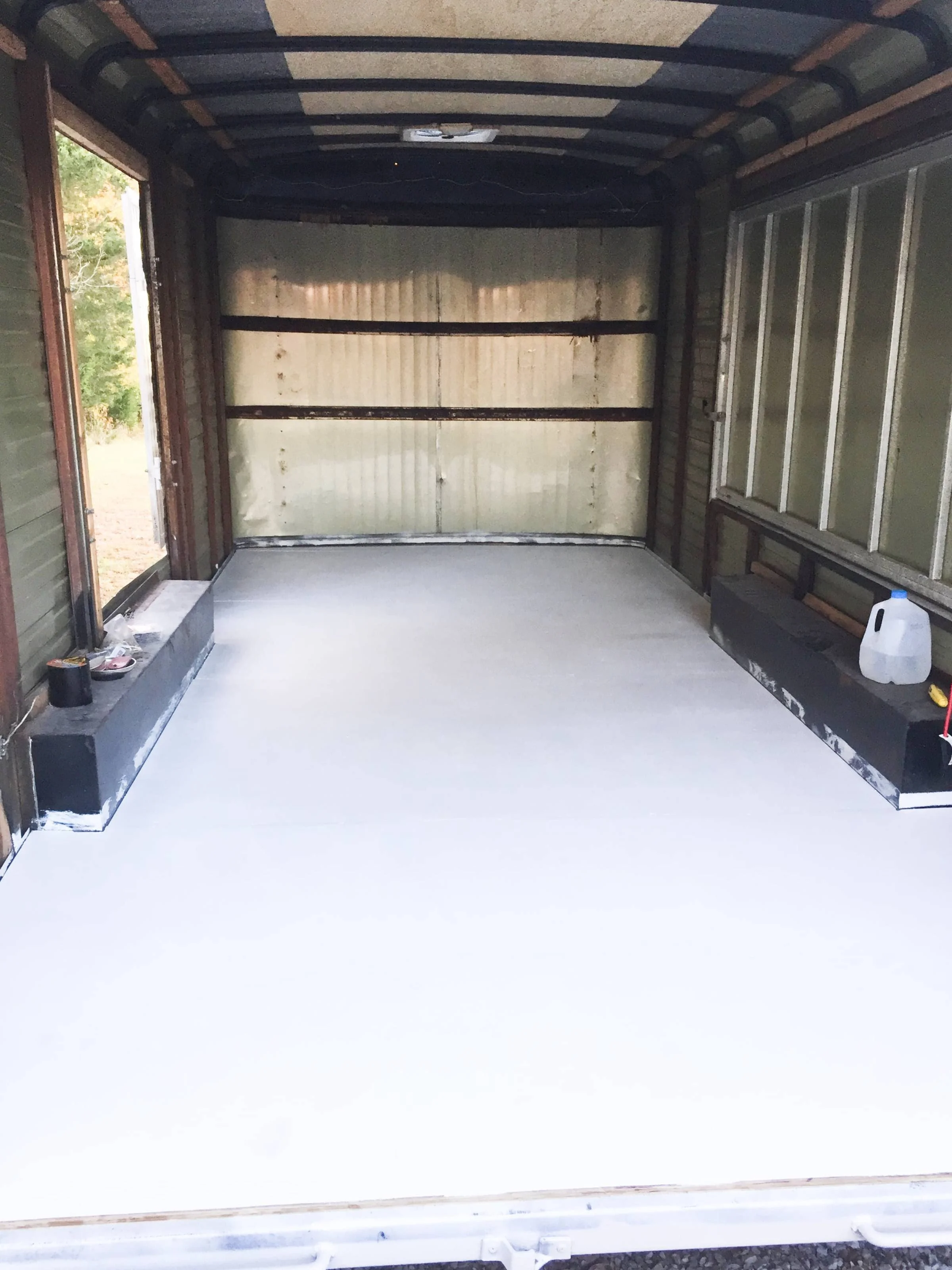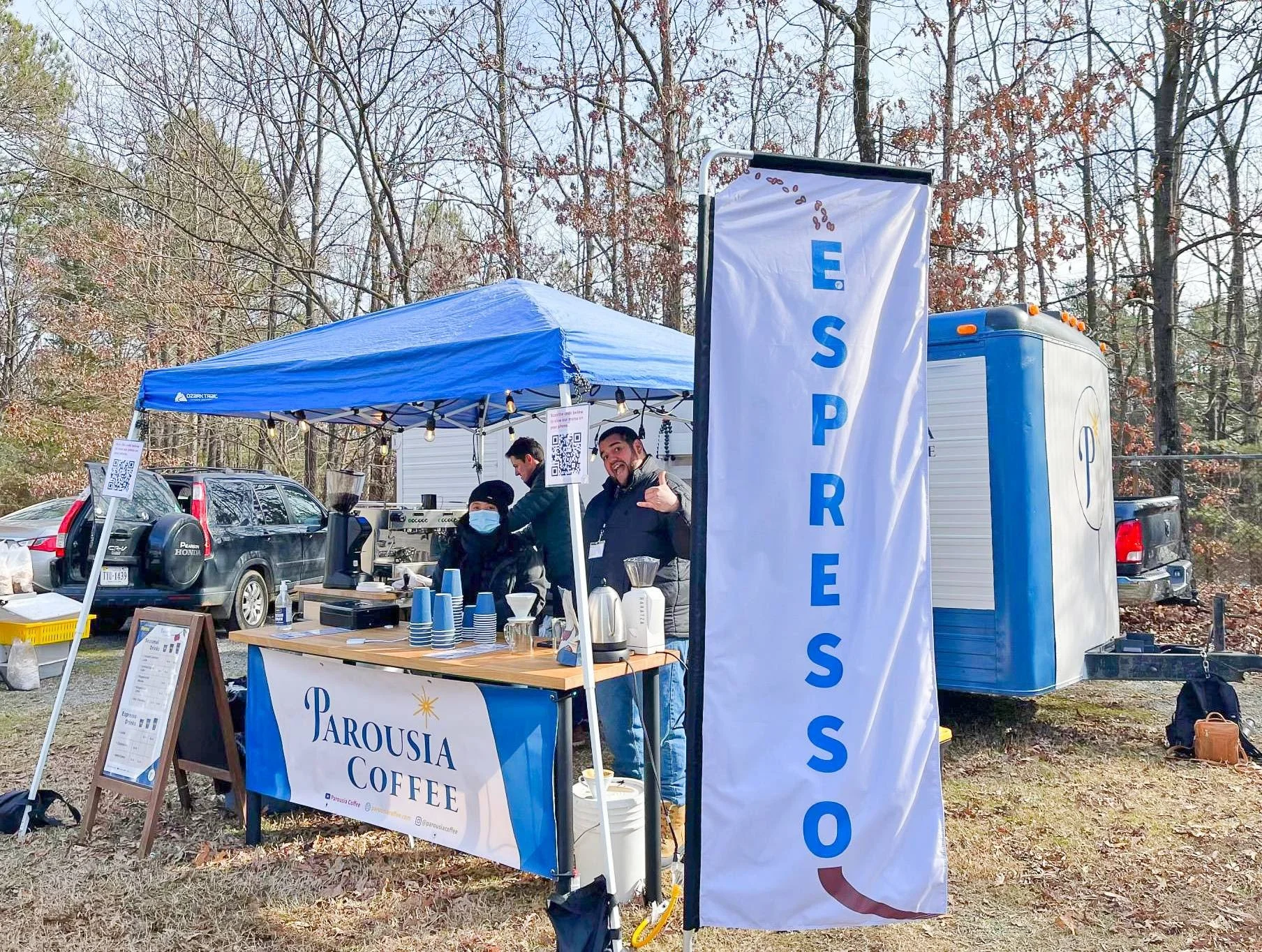From Tin Can To Transporter
My forearms were covered in sawdust and metal shavings. I was ensconced in what had been a finished trailer a few short hours ago. Now it was a gutted tin can on wheels. The wall panels, floor boards, aluminum window trim, and electrical conduit lay in a pile on the driveway.
“Well, that escalated quickly.”
The Friday morning following our twilight escapade to pick the trailer up dawned warm and bright. We gathered eagerly in Jimmy’s driveway to survey our prize in the full light of day.
It was in remarkably good condition for a trailer that was well over 20 years old. The salt-less roads and pleasant weather of California had treated her well.
Most of the original elements were intact and functional. No sense in adding new on top of old, though. We soon decided that our mobile cafe dreams demanded a complete overhaul.
Mobile Cafe Dreams
Like many dreams, the vision for our cafe on wheels started as more of a sensibility than a refined concept.
First, this was going to be a DIY project. We would be outsourcing as little of the labor as possible. Never mind that we didn’t have any experience building out trailers. Or most of the skills required.
Second, it would be a trailer and not attached to a vehicle. We wanted the flexibility to use, upgrade, and maintain the cafe without the added commitment of an attached engine.
Third, it would be welcoming and open to the surroundings. As low to the ground as possible, with sizable openings to allow full visibility inside, and warm lighting inside to invite conversation and curious gazing.
Our more specific ideas remained a swirling, untethered cloud waiting to be forced into a specific form. The potential forms were numerous. During our search we considered: large campers, tear drop campers, horse trailers, utility trailers, and even a retired ice cream truck.
Cue The Adversity
Two days after we had stripped the internals from the trailer, we ran into our first snag. We had seemingly run afoul of the neighborhood HOA.
We were informed that a certain member of the HOA had received "multiple complaints” of noise and the like. We had only been at work on the trailer for a few hours during daylight but, lacking any way to address the faceless, nameless complainants (who we later discovered to be a single individual), it looked like we were in a jam.
After a few days of frustrated fuming and head scratching, we received a generous offer. Mike, who had assisted us in finding the trailer, offered up a work spot behind his shed.
The only rub was the hour and a half round trip to Powhatan every time we planned to work on it. What had started as a convenient project in the driveway near all the tools became a trek that required large chunks of time and impeccable foresight. Any forgotten tool or supply meant a long trip home.
The Transformation Begins
Once we had settled the trailer into her new home, we determined that paint and repair work was the best place to start. So began the first descent into madness. What do you prime an aluminum trailer with? How about paint? Acrylic? Oil? What’s the difference? What’s the best looking (but also most realistic) way to apply it?
We settled on oil paint. It’s harder to work with but is more durable. What we soon found out is that due to environment legislation, the selling of oil paint is on a county to county basis. Calls to multiple stores in multiple cities finally revealed a Lowe’s within a 45 minute drive that still carried it.
The next challenge was timing and the weather. Factoring in the long commute as well as the curing period of the paint, each trip only offered enough time for one coat.
With primer, white, and blue to apply that meant six trips just for paint. Six commutes. Six times priming and then cleaning the paint sprayer. Six times suiting up, head to foot.
Determined to finally be done and with a storm rolling in for the next few days, we performed the final coat of white paint in complete country darkness. I scaled up and down the latter as Jimmy followed behind with a work lamp.
Nothing To Stand On
By the time we finished with the paint, October was coming to a close. With our first major project done, it was time to tackle the inside.
The first step was cutting in floor boards. As we laid them into place we were able to step inside the trailer for the first time since the day after we purchased it. Seven broken drill bits later and they were screwed into place.
Having a floor again was a relatively simple step but it was highly motivating. After a month and a half of experiencing the trailer as a steel and tin carcass, it allowed us to envision the result to come.
The final step for the floors was a paint finish. The cure time led to another bout of impatience. For the second coat, we knew we were teetering on the edge of prematurity so I decided to take my shoes off. I was paint-rolling my way towards the back door when my socks started to stick. Each step got a little worse and by the time I was halfway out, the floor stole my right sock. I decided it would be an inconvenient memento to leave and managed to extract it. Whether I was leaving my mark on the trailer or it was taking a bit of me is up for debate.
Sweetness, Come Home
It was now November and the floor was complete. With a three month absence and most of the loud work behind us, we decided to risk the shadowy menace of the HOA.
It was time for the trailer, Sweetness, to come home.
Remaining on the project docket: walls, ceiling, and the most intimidating, electrical.
While the inside was far from complete, it was near this time that the trailer made her public debut. From December 2021 to April 2022, the trailer was our backdrop at the market.
It would be much warmer before she was an operating cafe.

